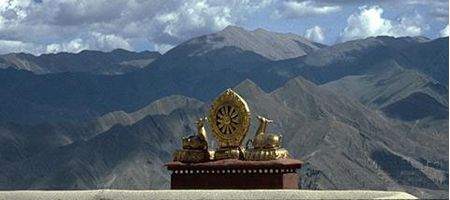Massive earthquakes have left clear ground scars in the central Himalayas, raising concerns that more could be on the way – in a region that has a population density similar to that of New York City.

A study from Nanyang Technological University (NTU) has revealed for the first time that in 1255 and 1934, two great earthquakes ruptured the surface of the earth in the Himalayas.
Quakes in 1897, 1905, 1934 and 1950 all had magnitudes between 7.8 and 8.9, each causing tremendous damage. But they were previously thought to have been so-scalled blind quakes, which don’t break the earth’s surface.
However, NTU Professor Paul Tapponnier says that new high resolution imagery and state of the art dating techniques show that the 1934 earthquake did indeed rupture the surface, breaking the ground over a length of more than 150 kilometers, south of the part of the range that harbours Mount Everest.
The break formed along the main fault in Nepal that currently marks the boundary between the Indian and Asian tectonic plates – also known as the Main Frontal Thrust (MFT) fault.
“The significance of this finding is that earthquakes of magnitude 8 to 8.5 may return at most twice per millennium on this stretch of the fault, which allows for a better assessment of the risk they pose to the surrounding communities,” says Tapponnier.
Locals can’t take comfort from the the long interval between the two recently discovered earthquake ruptures.
“This does not imply that the next mega-earthquake in the Himalayas will occur many centuries from now because we still do not know enough about adjacent segments of the MFT Mega-thrust,” says Tapponier.
“But it does suggest that areas west or east of the 1934 Nepal ground rupture are now at greater risk of a major earthquake, since there are little or no records of when last earth shattering temblor happened in those two areas.”






